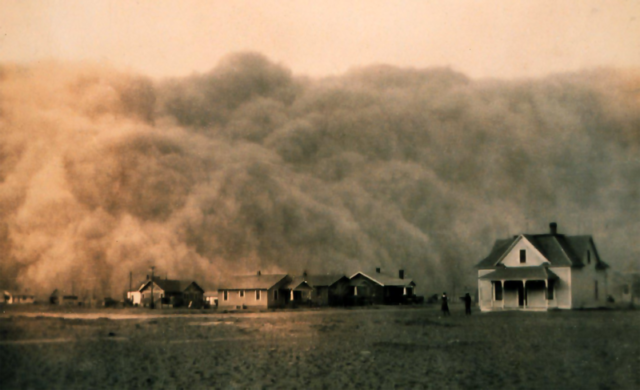Dust Bowl
The Dust Bowl, also known as the Dirty Thirties, was a period of severe dust storms that greatly damaged the ecology and agriculture of the US and Canadian prairies during the 1930s.
Farmers rapidly plowed-up the grasslands of the southern Plains and planted wheat in its place. Severe drought and a failure to apply dryland farming methods to prevent wind erosion which caused the phenomenon.
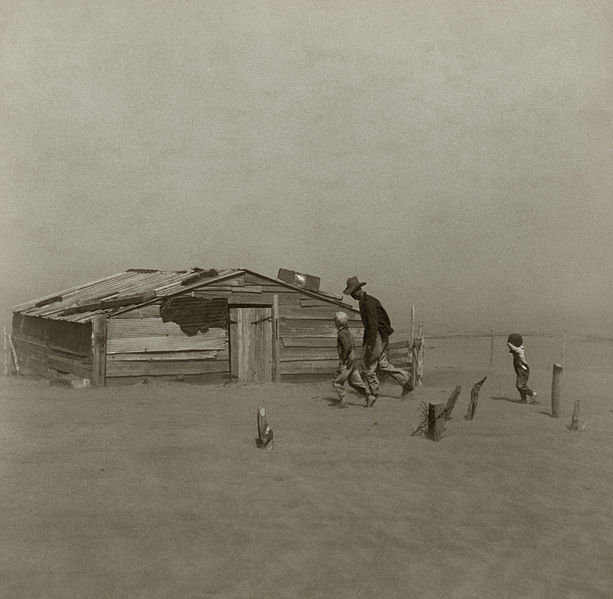
Deep plowing on the Great Plains killed the natural grasses that kept soil in place, and the topsoil turned to dust and blew away. Tons of soil were blown off barren fields and carried in storm clouds for hundreds of miles, creating one of the most disastrous ecological events in U.S. history. The drought came in three waves, 1934, 1936, and 1939–40, but some regions of the high plains experienced drought conditions for as many as eight years.
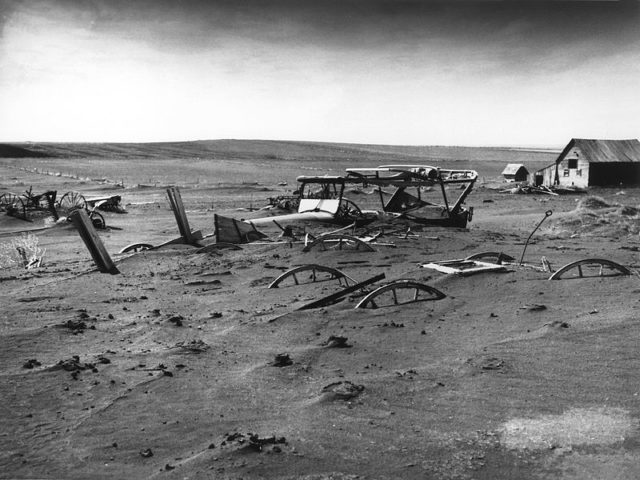
As one “black blizzard” hit after another, harmful dust particles accumulated in people’s lungs, causing hundreds of deaths and sickening thousands. Dead livestock and wildlife littered the ground. By the time the drought ended, up to one-third of the most affected homesteaders had fled the Southern Plains for greener pastures.
Great Smog
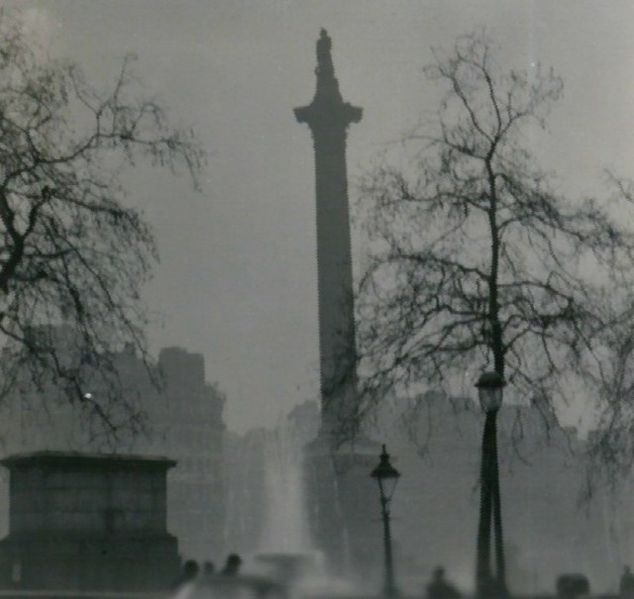
From December 1952 to March 1953 in Greater London 12,000 residents more than usual perished in what was modern London’s most massive civilian disaster. The cold weather preceding and during the smog meant that Londoners were burning more coal than usual to keep warm. Post-war domestic coal tended to be of a relatively low-grade, sulfurous variety (economic necessity meant that better-quality “hard” coal tended to be exported), which increased the amount of sulfur dioxide in the smoke.
Public transport ceased, apart from the London Underground; and the ambulance service stopped functioning, forcing users to transport themselves to a hospital. The smog even seeped indoors, resulting in the cancellation or abandonment of concerts and film screenings. Outdoor sports events were also affected, abandoned cars dotted the roads and some people even accidentally stumbled into the Thames River.
In the inner London suburbs and away from town centers there was no disturbance by moving traffic to thin out the dense fog in the back streets. The result was that visibility could be down to a meter or so in the daytime.
Worst of all, about 4,000 Londoners died of respiratory ailments over those few days, and up to 8,000 more would succumb in the weeks that followed. Recent research shows that those in the womb at the time of the so-called great smog grew up performing worse in school and were less likely to hold a job than their peers.
Minamata Disease
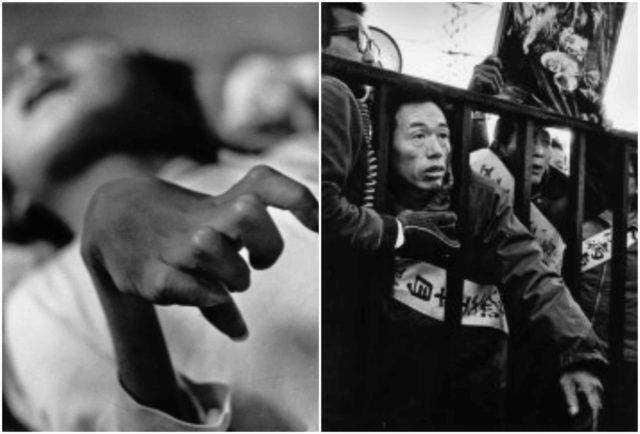
Minamata disease was first discovered in Minamata city in Kumamoto prefecture, Japan, in 1956. It was caused by the release of methylmercury in the industrial wastewater from the Chisso Corporation’s chemical factory, one of Minamata’s biggest employers, which continued from 1932 to 1968. This highly toxic chemical bioaccumulated in shellfish and fish in Minamata Bay and the Shiranui Sea, which, when eaten by the local populace, resulted in mercury poisoning.
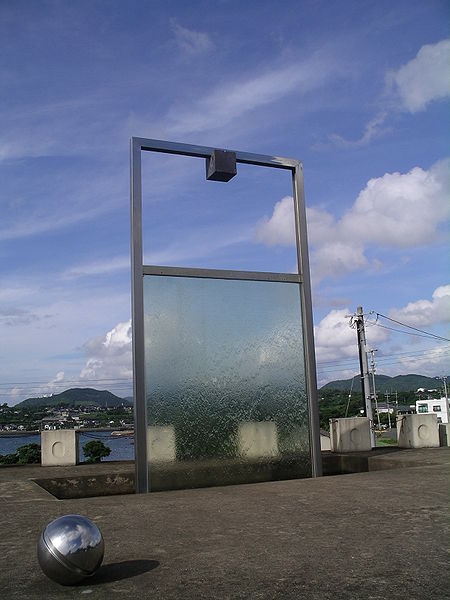
Cats would suddenly foam at the mouth, dance around wildly and throw themselves into the sea, whereas birds would crash land and fish would inexplicably go belly up. Before long, humans too were suffering from what became known as Minamata Disease, slurring their speech, stumbling about and having trouble with simple tasks, such as buttoning buttons.
While cat, dog, pig, and human deaths continued for 36 years, the government and company did little to prevent the pollution. The animal effects were severe enough in cats that they came to be named as having “dancing cat fever”.
Chisso continued releasing mercury-tainted wastewater until 1968, reportedly causing at least 2,000 deaths, as well as birth defects, paralysis, and other maladies.
Bhopal
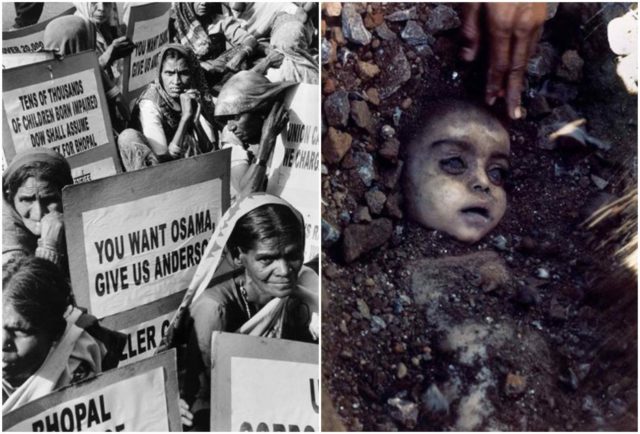
The Bhopal disaster also referred to as the Bhopal gas tragedy, was a gas leak incident in India, considered the world’s worst industrial disaster.
On December 3, 1984, more than 40 tons of methyl isocyanate gas leaked from a pesticide plant in Bhopal, India, immediately killing at least 3,800 people and causing significant morbidity and premature death for many thousands more.
Vomiting and gasping for air, those who didn’t die in their sleep poured into unprepared area hospitals or desperately attempted to outrun the fumes. Dog, bird, cow and water buffalo corpses reportedly lined the streets. Investigations later uncovered a slew of safety violations at the plant, including broken and outdated equipment.
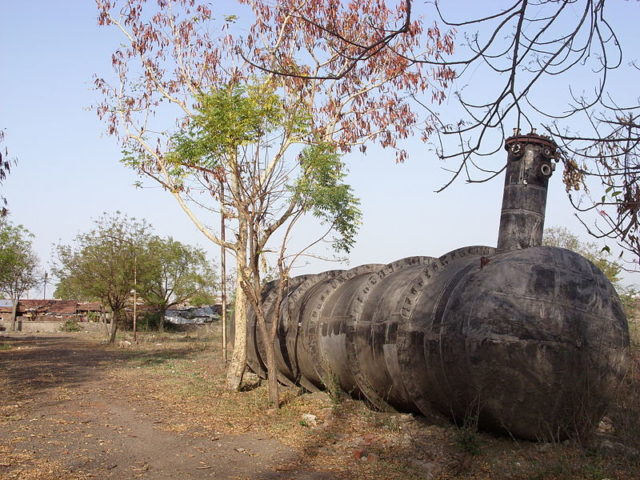
The company involved in what became the worst industrial accident in history immediately tried to dissociate itself from legal responsibility. Eventually, it reached a settlement with the Indian Government through a mediation of that country’s Supreme Court and accepted moral responsibility. It paid $470 million in compensation, a relatively small amount of based on significant underestimations of the long-term health consequences of exposure and the number of people exposed.
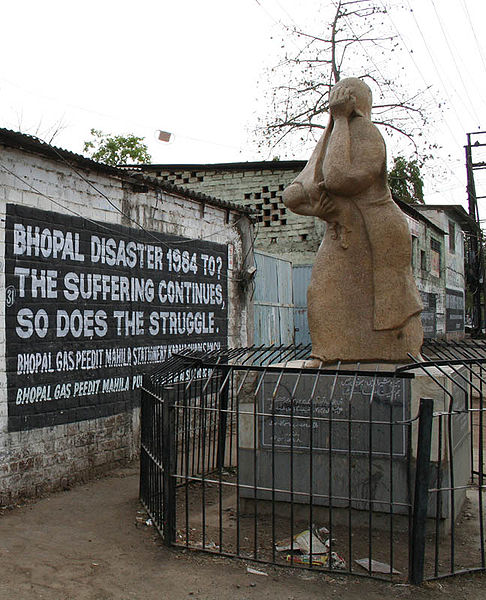
Though estimates vary, roughly 15,000 Bhopal residents are believed to have died in what’s often referred to as history’s worst industrial accident. Hundreds of thousands of additional inhabitants suffered afflictions ranging from memory loss and nerve damage to blindness and organ failure. To this day, the site of the plant, now owned by Dow Chemical Company, remains highly contaminated.
Chernobyl
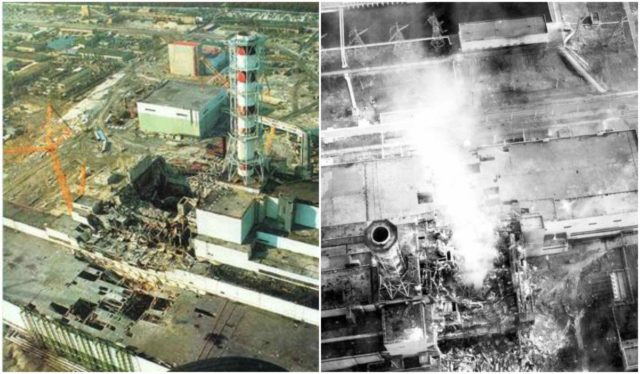
On April 26, 1986, a turbine test on one of the reactors at the Chernobyl nuclear power station went horribly awry, leading to a series of explosions that spewed massive amounts of radioactive material into the atmosphere. The accident, which the Soviet authorities attempted to cover up, initially claimed only 31 lives: two plant workers who died in the blasts, a third who reportedly keeled over of a heart attack and 28 first responders who contracted acute radiation syndrome during the frantic early stages of the cleanup.
The four most harmful radionuclides spread from Chernobyl were iodine-131, caesium-134, caesium-137, and strontium-90, with half-lives of 8.02 days, 2.07 years, 30.2 years and 28.8 years respectively. The iodine was initially viewed with less alarm than the other isotopes, because of its short half-life, but it is highly volatile, and now appears to have traveled furthest and caused the most severe health problems in the short term.
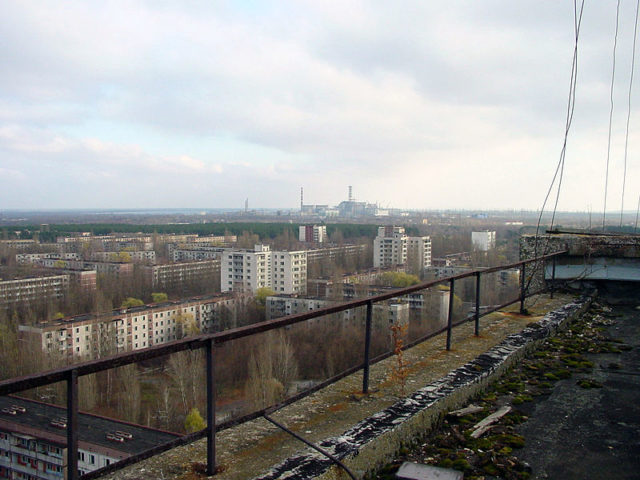
Chernobyl also unleashed a thyroid cancer epidemic and likely caused additional cancer cases as well. In 2005, a United Nations-backed panel calculated the eventual death toll at up to 4,000, whereas other organizations put this number significantly higher. For perhaps centuries to come, an exclusion zone, set up around the plant following the forced evacuation of tens of thousands of area residents, will be off limits to human habitation.
Kuwaiti Oil Fires
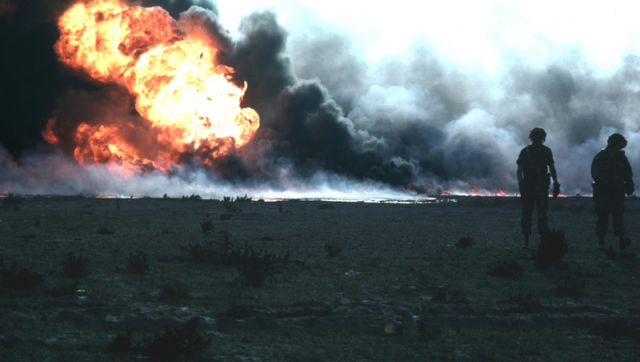
Saddam Hussein knew the war was over. He could not have Kuwait, so he wasn’t about to let anyone else benefit from its riches. As the 1991 Persian Gulf War drew to a close, Hussein sent men to blow up Kuwaiti oil wells.
Estimates placed the number of oil well fires from 605 to 732. The Kuwait Petroleum Company’s estimate as of September 1991 was that there had been 610 fires, out of a total of 749 facilities damaged or on fire along with an unspecified number of oil filled low-lying areas, such as “oil lakes” and “fire trenches”. These fires constituted approximately 50% of the total number of oil well fires in the history of the petroleum industry and damaged or destroyed approximately 85% of the wells in every major Kuwaiti oil field.
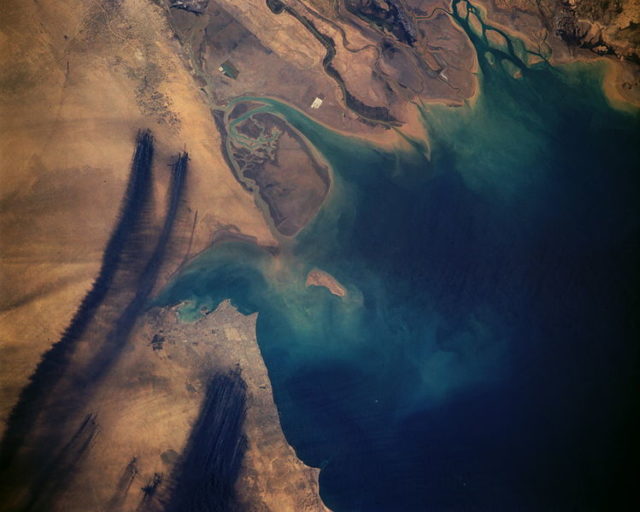
Meanwhile, black rain, a mix of natural precipitation and smoke particles, fell as far away as the Himalayas; hundreds of oil lakes up to four inches deep blotted the landscape, fatally luring in birds who confused them for water; and a layer of sand and gravel combined with oil and soot, covered almost 5 percent of Kuwait’s territory.
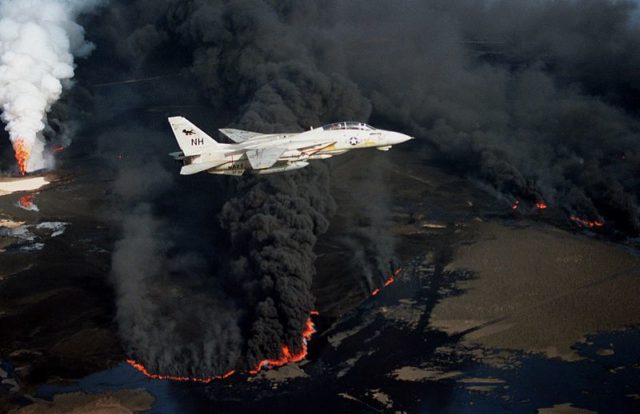
By the time the last of the blazes was extinguished that November, an estimated 1 billion to 1.5 billion barrels of oil had spilled out and more than 100 people were dead, including 92 Senegalese soldiers whose transport plane crashed in the smoke-blackened skies. Immediately thereafter, Hussein initiated another environmental disaster, draining the vast marshlands of southern Iraq in order to suppress a Shiite rebellion.
BP Oil Spill
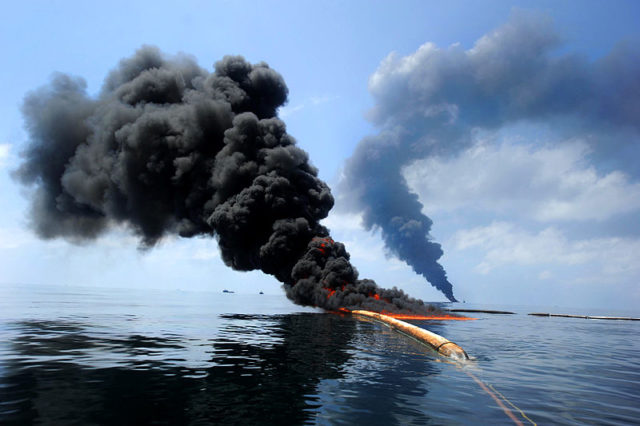
On April 20, 2010, the Deepwater Horizon oil rig, located far out in the Gulf of Mexico, exploded into flames, killing 11 workers and injuring several others. The rig, owned by offshore drilling contractor Transocean and under lease to oil giant BP, then sank two days later, causing a petroleum leak that would gush out of control for nearly three months. According to the U.S. government, around 4.2 million barrels of oil ultimately escaped, contaminating at least 43,300 square miles of ocean and 1,300 miles of shoreline from Texas to Florida.
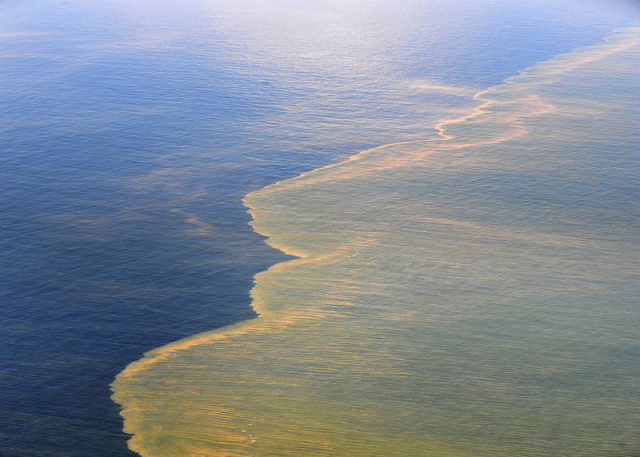
Considered the largest accidental marine oil spill in history, it temporarily decimated the Gulf’s fishing and tourism industries and killed thousands of birds, sea turtles and dolphins. In 2013 it was reported that dolphins and other marine life continued to die in record numbers with infant dolphins dying at six times the normal rate. One study released in 2014 reported that tuna and amberjack that were exposed to oil from the spill developed deformities of the heart and other organs that would be expected to be fatal or at least life-shortening and another study found that cardiotoxicity might have been widespread in animal life exposed to the spill.
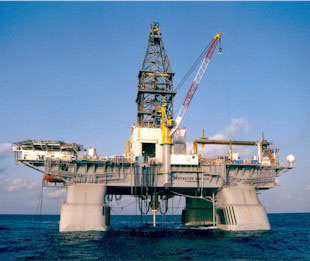
BP has since shelled out tens of billions of dollars in cleanup costs, fines, and legal settlements.
